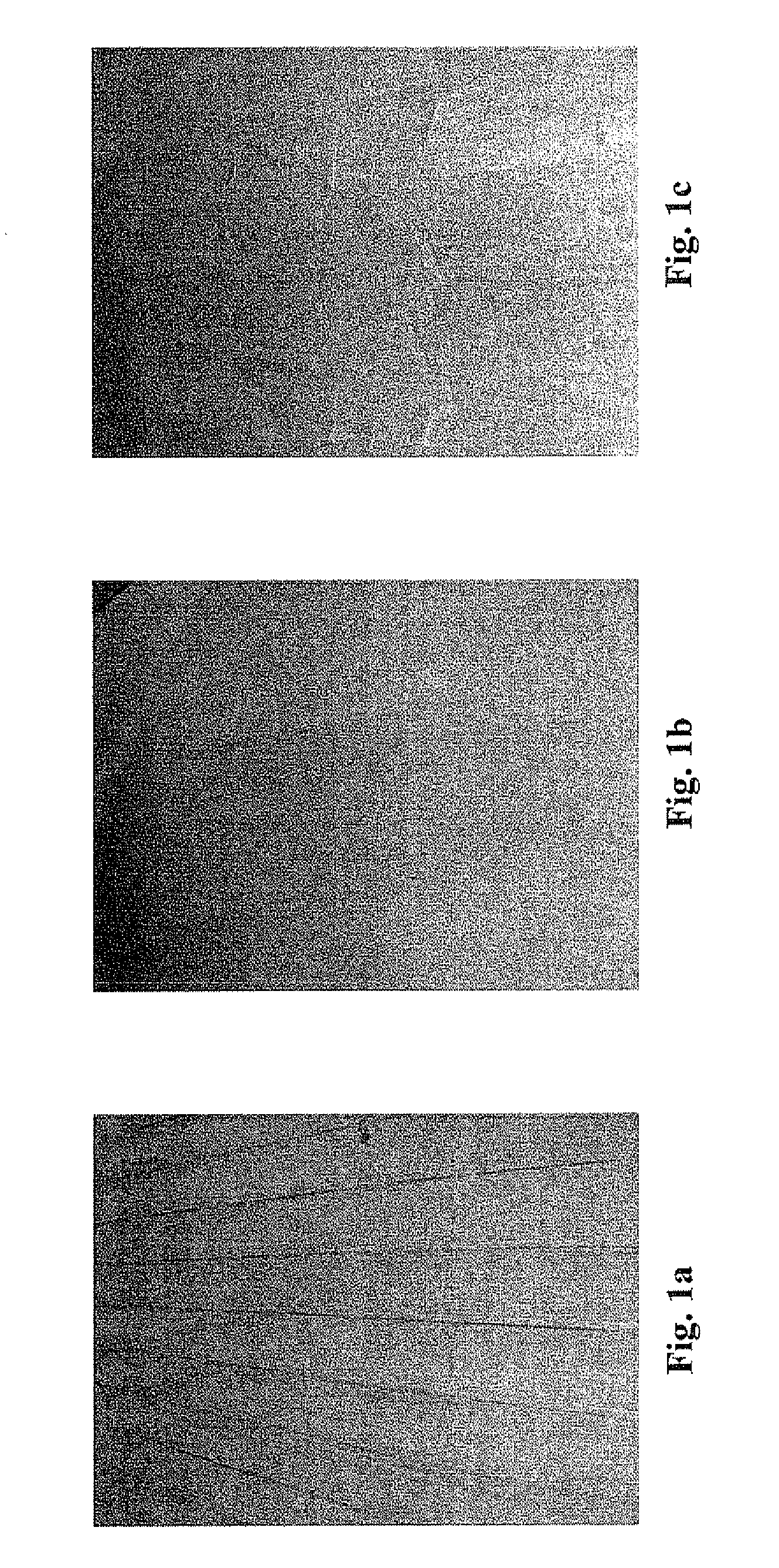Adhesive formulations containing urea additives, methods of forming plywood therewith, and plywood products made thereby
a technology of additives and adhesive formulations, which is applied in the directions of adhesive types, transportation and packaging, and synthetic resin layered products, etc., can solve the problems of reducing the value of the panels, forming color in plywood made with such additives, and not always ideal use of formaldehyde-free adhesive formulations, so as to avoid undesirable staining and significant economic benefits
- Summary
- Abstract
- Description
- Claims
- Application Information
AI Technical Summary
Benefits of technology
Problems solved by technology
Method used
Image
Examples
examples 1-6
PAE-Soy-Urea Formulations
[0055]Samples of polyamidoamine-epichlorohydrin (“PAE”) / soy adhesive compositions were prepared with varied amounts of urea. A quantity of 33.75 g ChemVisions CA1000 Additive PAE resin (20% solids content), available from Hercules Inc., Wilmington Del., was diluted with 69.00 g dilution water. Example 1 was a comparative example in which no urea was added to the composition. In Examples 2 to 7, urea was added to the solution in the amounts noted in Table 1, and stirred until dissolved. To each solution was then added 47.25 g Prolia 100 / 90 soy flour available from Cargill Inc., Minneapolis Minn. while stirring. The mixture was stirred with a propeller-type stirrer at 60 rpm for 60 minutes. The pH and Brookfield viscosity of the adhesive compositions were measured and are listed in Table 1. The Brookfield viscosity was measured again at 24 hours and is also listed in Table 1.
TABLE 1PAE / Soy Formulations With Added UreaBrookfieldExampleg UreaWt. %Viscosity (cPs)...
examples 8-12
PAE-Soy-Urea Formulations
[0058]Samples of PAE / soy adhesives were prepared with varied amounts of urea. A quantity of 31.88 g ChemVisions CA1000 Additive PAE resin (20% solids content), available from Hercules Inc., Wilmington Del., was diluted with 73.5 g dilution water. To each sample was added 1.50 g of urea. To each urea-containing solution was then added 44.63 g Prolia 100 / 90 soy flour available from Cargill Inc., Minneapolis Minn. while stirring. The mixtures were then stirred with a propeller-type stirrer at 600 rpm for 60 minutes. The pH of the adhesive mixtures was adjusted to different pH values using either concentrated sulfuric acid or concentrated phosphoric acid, the quantities of which are listed in Table 2 with the final pH values. The Brookfield viscosity of the adhesive formulations were measured and are listed in Table 2. The Brookfield viscosity was measured again at 24 hours and is also listed.
TABLE 2Formulations of PAE / Soy with added UreaExam-Wt.Brookfieldpleg U...
examples 13-15
Preparation of Hardwood Plywood Panels
[0059]A master batch of soy / PAE adhesive was prepared by mixing 33 pounds of water with 17 pounds of Hercules CA1000 additive (20% solids content), available from Hercules Inc., Wilmington Del., and 25 pounds of Prolia 100 / 90 soy flour, available from Cargill Inc., Minneapolis Minn. The CA1000 additive and water were combined in a cement mixer and the soy flour was poured in while mixing. Once the soy flour was all added the formulation was mixed for 30 minutes. From this master batch, three aliquots of 3,180 g were removed and were combined with different amounts of urea as shown in Table 3. The urea was added to the aliquots of Example 8 and Example 9 in separate 5 gallon pails and the mixtures were stirred with a hand held drill with a paddle type stirrer. The urea used was reagent grade material (98% pure) obtained from Aldrich Chemical Company, Milwaukee Wis. These experimental samples were then each applied to three sets of two 4′×4′ popla...
PUM
| Property | Measurement | Unit |
|---|---|---|
| pH | aaaaa | aaaaa |
| temperatures | aaaaa | aaaaa |
| temperatures | aaaaa | aaaaa |
Abstract
Description
Claims
Application Information
 Login to View More
Login to View More - R&D
- Intellectual Property
- Life Sciences
- Materials
- Tech Scout
- Unparalleled Data Quality
- Higher Quality Content
- 60% Fewer Hallucinations
Browse by: Latest US Patents, China's latest patents, Technical Efficacy Thesaurus, Application Domain, Technology Topic, Popular Technical Reports.
© 2025 PatSnap. All rights reserved.Legal|Privacy policy|Modern Slavery Act Transparency Statement|Sitemap|About US| Contact US: help@patsnap.com

